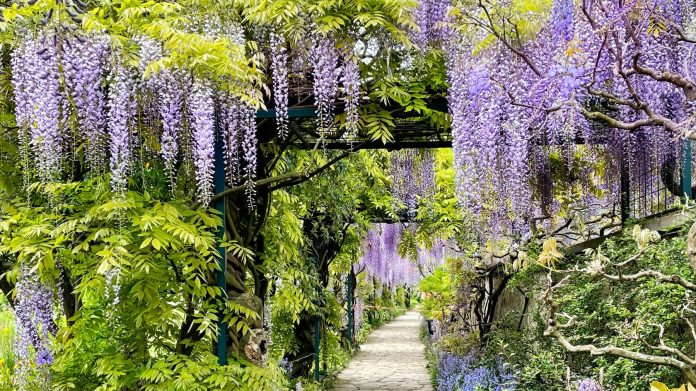The Wandsbek Special Botanical Garden has chosen the poisonous plant of the year 2024 online. She impresses with her beauty.
Last year the parsley, this year a blue-flowering climbing plant: the wisteria won the election for poisonous plant of the year 2024. As the special botanical garden in Hamburg Wandsbek announced, wisteria won in a public online vote, ahead of vegetable asparagus in second place and St. Jacob’s wort in third place.
Wisteria, a very poisonous plant, has become established and impresses with its blue-purple flowers. The climbing butterfly plant can reach a height of up to 30 meters and beautifies gardens, fences, walls and house walls throughout Germany. But he is not at home with us. The different types of wisteria originally come from China, Australia, North America and East Asia.
Which parts of the wisteria are poisonous?
“Roots, branches, bark, fruits and especially the seeds are poisonous,” write the botanists. The main active ingredient is Wistarin. It has a similar effect, but not as strong, as the cytisine of laburnum (the poisonous plant of 2012, by the way). The concentration of toxins varies greatly depending on the season.
According to a press release from the Special Botanical Garden, just two seeds can cause the first symptoms of poisoning in children. Symptoms of poisoning with Wistarin include: stomach problems, abdominal pain, vomiting, diarrhea, dilated pupils, insomnia, circulatory disorders and cardiac arrest. If you have the slightest suspicion of poisoning, you should consult a doctor.
The ingredients in wisteria are also toxic for pets such as dogs and cats. Due to the smaller body size, according to the information center against poisoning in Bonn, even small amounts are enough to cause diarrhea, vomiting and cardiac arrest.


